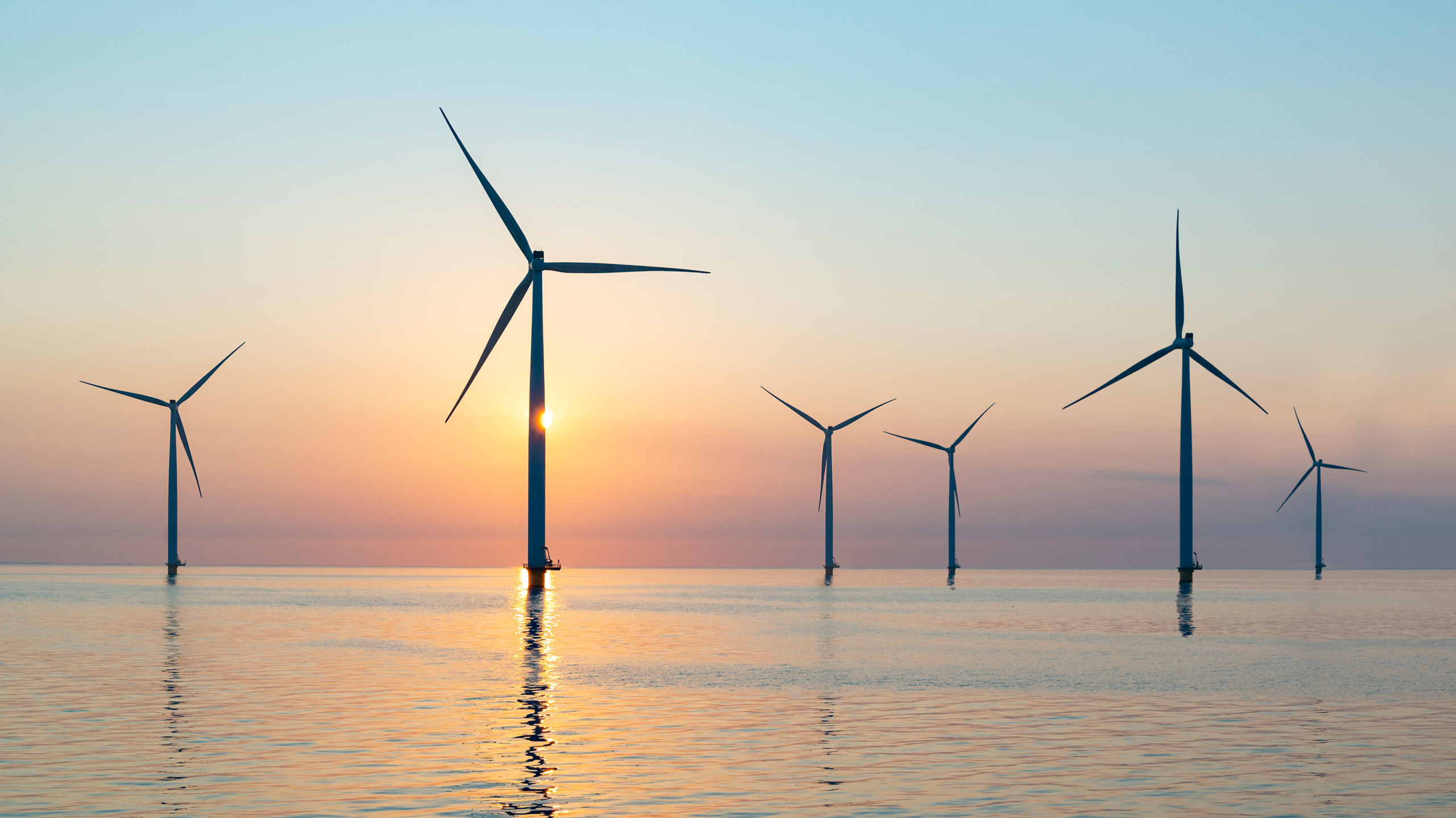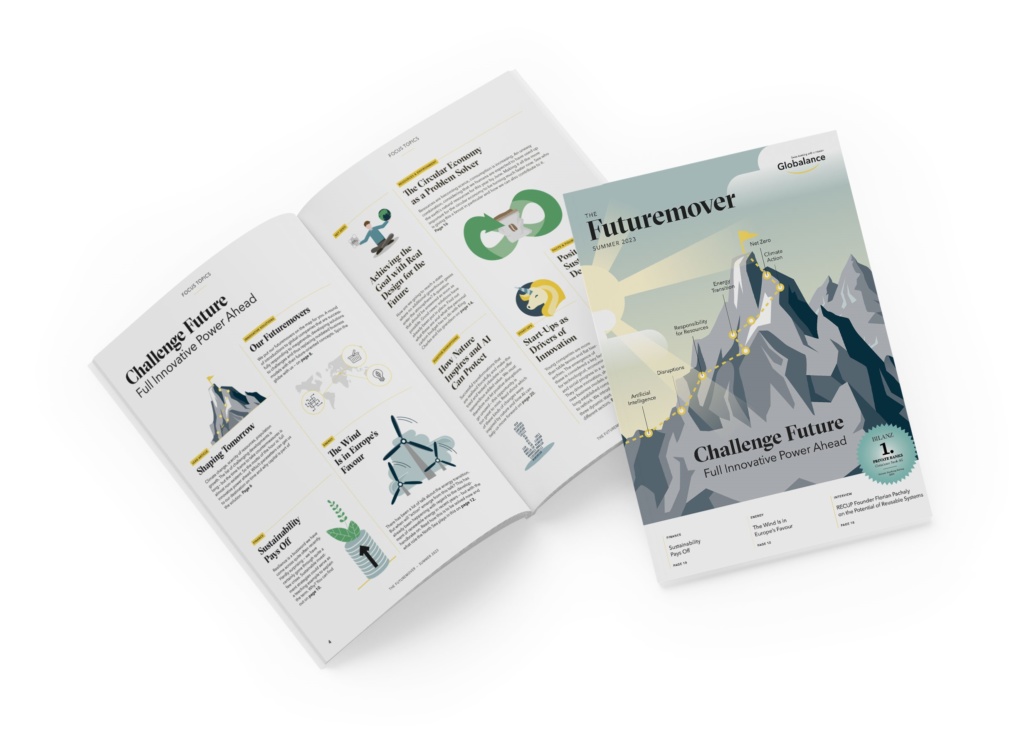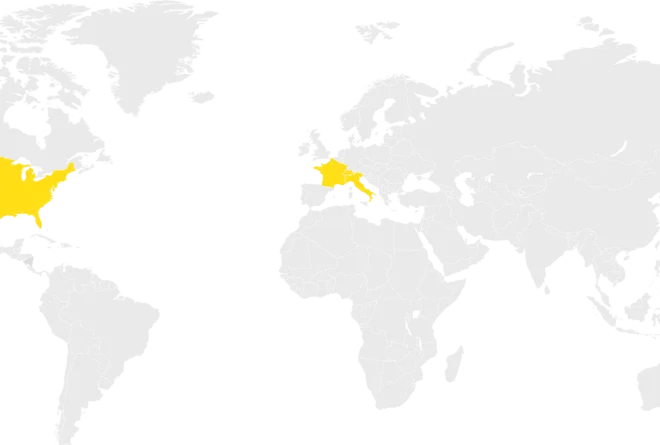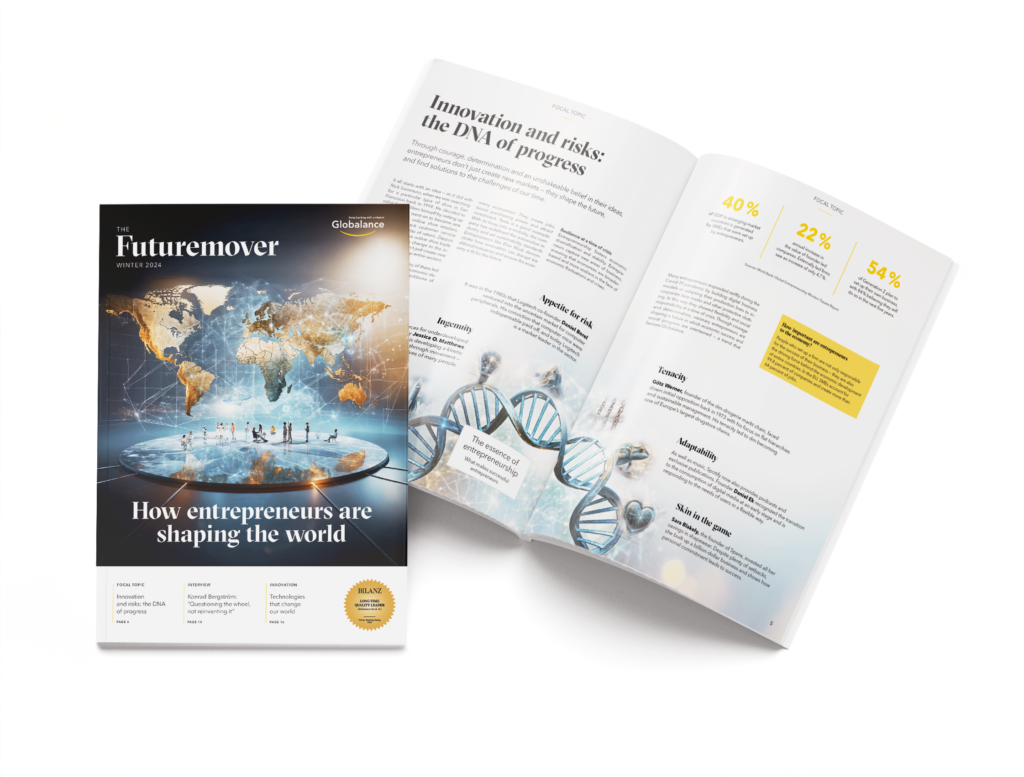News & Trends
Shaping Tomorrow

WHETHER IT’S AT START-UPS OR LARGE CORPORATIONS: STRATEGIES HAVE CHANGED — Companies around the world are venturing the steep climb towards more sustainability. And with good reason: it points the way to how we will shape our future.
There is no serious future scenario in which climate change and scarcity of resources will not come to a head. These phenomena will be part of our lives and companies, economies and societies are adapting to them. Innovations and disruptive solutions in particular play a significant role. We are already trying to integrate sustainable engagement into our everyday lives as best we can — this is not always an easy undertaking. But looking in the rear-view mirror and assessing the status quo always helps in shaping the future. Today, we are already driving more and more electric cars, we are happy to order vegetarian food during our lunch break, and solar panels on house roofs are no longer a strange sight. Even though most of us probably still see room for improvement in ourselves, we are all living much more forward-looking lives than we did a few years ago. Because a great deal has happened in the meantime. This virtually all-encompassing longterm trend is also reflected in the economy. Parallel to the changing lifestyles of us consumers, it is currently shifting its focus globally. More and more companies are converting their business model to sustainable future viability and thus contributing to change. But future challenges will not be met at a sprint — the approach will be more like an ultra-marathon at high speed. So the right pacesetters are all the more important.
More and more companies are converting their business model to sustainable future viability.
Today’s Pacesetters — Full Innovative Power Ahead
Examples of successful transformations so far are as plentiful as fish in the sea — but in contrast to the sea dwellers there are more and more of them. In the EU we have been able to increase the share of renewable energy in electricity production to 22 percent (+9%) in the last seven years. This change is not enough, but still indicates a positive trend. The environmentally friendly alternatives are ready — ready to be used to replace fossil energy sources. The planned mega power plants in the North Sea could serve as true pacesetters for wind energy in this regard.

Even the construction industry, the elephant in the climate crisis, is working on a better carbon footprint. For example, secondary raw materials are already being increasingly used today with the help of a circular economy. A building material register, like the one being used in Heidelberg, could also drive the “urban mining principle” in other cities in future. And even concrete, the grey climate polluter, is also visibly changing towards a more compatible building material, thanks to innovative companies like neustark, which are even working on a “net zero concrete”. The young Swiss company and ETH spin-off uses recycled concrete as carbon storage, making it possible to significantly improve the climate footprint of new buildings.
We are also encountering disruptions more and more frequently. There’s no doubt, these drastic changes, which make the tried and tested obsolete in no time at all, can quickly seem a bit scary. However, there is always a reason why some new technologies catch on so rapidly and forcefully — they work. Artificial intelligence has already turned out to be a true game changer in countless areas in the past. Is the newcomer ChatGPT developing into an allstar straight away? It certainly seems that way in many areas. And this disruption can even intensify the pace in environmental protection. ChatGPT can be used to monitor carbon emissions or preserve our biodiversity by analysing unimaginable amounts of data such as scientific papers or government reports. So you can already see, there are pioneers, pacesetters and rethinkers galore. For example, the concept of conserving resources is even finding its way into the textile industry. Upcycling and clothing repairs are even coming into fashion at big players like On and Patagonia. And coffee lovers no longer have to feel guilty about their coffee to go because of their environmental awareness. Because start-ups like RECUP are stirring up the market with great innovative power, forcing existing companies to rethink and giving us an environmentally friendly alternative along the way.
Capital as Part of the Solution
Capital is needed to further establish sustainable design for the future as a binding and effective compass. According to a 2023 assessment by Bloomberg New Energy Finance (BNEF), by 2040 the global economy will need five times as much annual funding as in 2022. The stability and profitability of future-oriented and sustainable investments show that this investment environment is also attractive for private investors. This opens up investment opportunities that pay off and make it possible to have an impact on the whole world. They speed up urgently needed developments and provide answers to the most pressing questions of our time. If the capital is managed sensibly, it becomes a significant piece of the solution puzzle.
The investment sums required also offer private investors an attractive environment.
Would you like to learn more about future-oriented and sustainable investments and their returns? Then the exciting article “Sustainability pays off” from the Futuremover magazine might be interesting for you.
Did you like this article? Then you might also be interested in our free magazine “The futuremover” with exciting topics.




